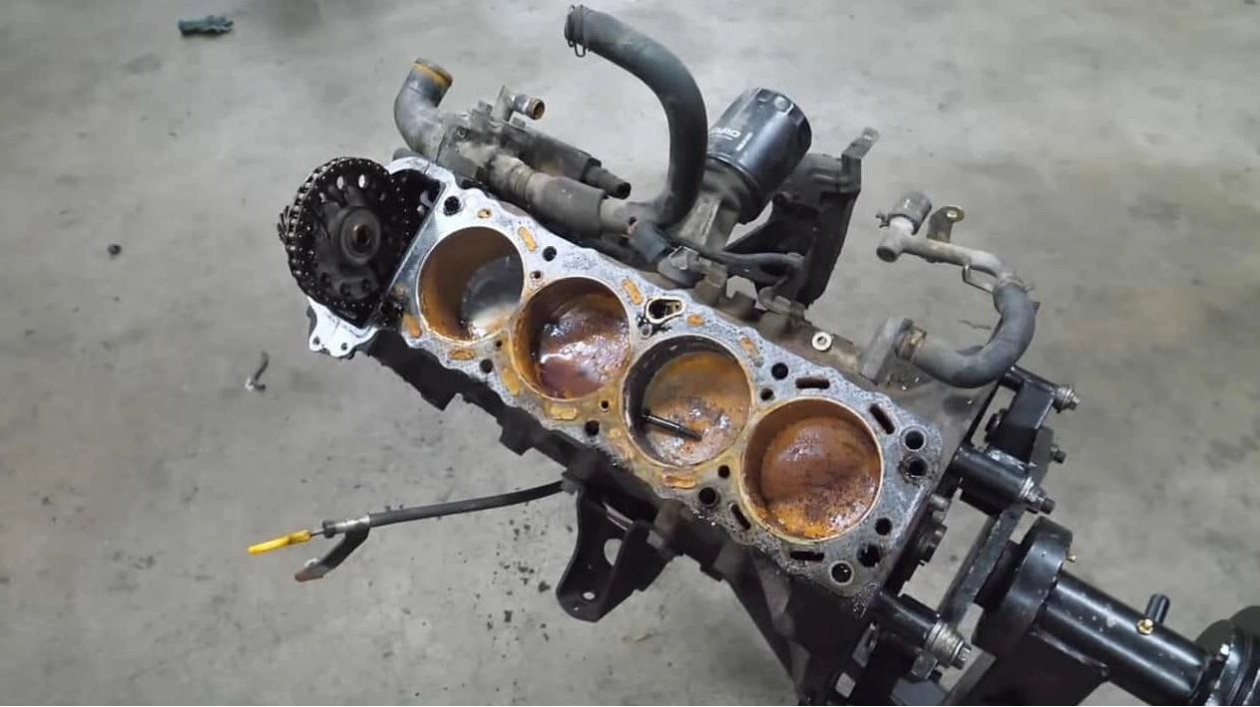In the past, this engine was the heart of a sporty 1995 Nissan 240SX. It's a KA24DE, the double overhead cam version of the 2.4-liter four-cylinder that powered various Nissans over the years, from the 240 to the Frontier. This particular engine delivered excitement for 230,000 miles, and it could have continued if it hadn't been neglected. This conclusion was drawn from a recent teardown video by the I Do Cars YouTube channel.
The project wasn't straightforward—host Eric mentioned that it took several days and significant effort to complete. The engine was sourced from a wrecked 240SX, though the circumstances of the crash remain unclear. Evidence suggests the engine was already faulty before the accident, not due to the collision. Regardless, this engine is beyond repair.
The cause of its demise is evident. From the start, there are signs of water intrusion in areas where it shouldn't be. Orange goo and mineral deposits are found on the spark plugs. Upon removing the intake, more rust and deposits are discovered on the coolant hoses. When the head is removed, the full extent of the damage becomes clear. This engine used ordinary tap water in its cooling system, not just as a temporary measure.
As a result, minerals in the water reacted with the iron and aluminum, leading to the orange sludge throughout the engine. This sludge eventually blocked cooling passages, causing overheating and ultimately a failed head gasket. The water found in the cylinders wasn't due to the engine being left unprotected. The milky sludge in the oil pan confirms the head gasket failure, mixing water and oil.
Had proper coolant been used, this might not have occurred. Additionally, if the engine had been repaired after the gasket failure, it might have been salvageable. Instead, the cam lobes, crankshaft, and head are all rusty, and the pistons had to be hammered free from the block.
Using water in the radiator can be a temporary solution to keep the engine cool, but it shouldn't be a long-term practice. There's a reason engine coolant exists, beyond just preventing freezing or boiling.
Source link: https://www.motor1.com






